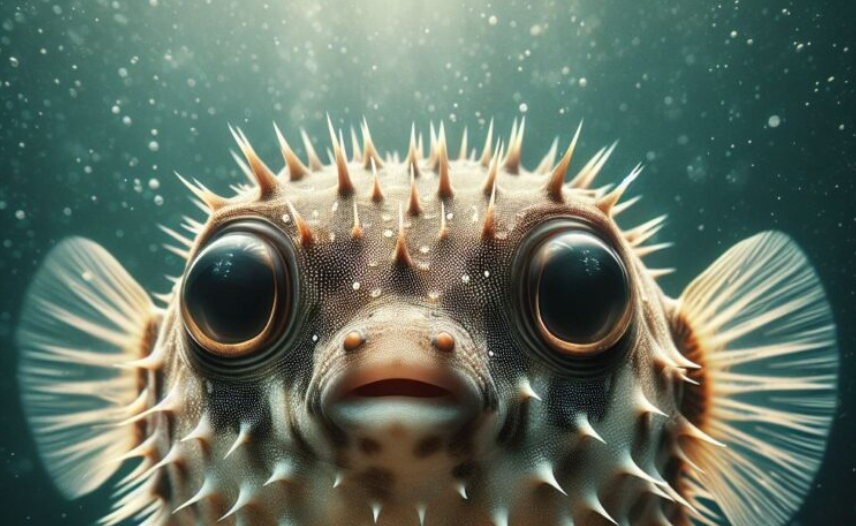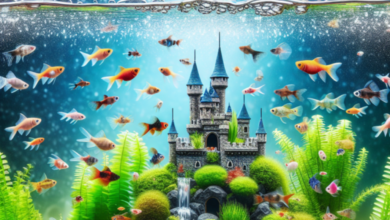Freshwater Puffer Fish require specific living conditions to thrive in a home aquarium. From habitat requirements to feeding and tank maintenance, providing optimal conditions is essential for the health and well-being of these unique aquatic pets. In this article, we will explore the key aspects of creating the ideal environment for freshwater puffer fish in a home aquarium.
Key Takeaways
- Maintain stable water parameters to ensure the health of freshwater puffer fish.
- Provide a varied diet to meet the nutritional needs of freshwater puffer fish.
- Regular water changes are crucial for maintaining water quality in the aquarium.
- Aquatic plants not only enhance the aquarium’s aesthetics but also provide hiding spots for freshwater puffer fish.
- Invest in a reliable filtration system to keep the aquarium water clean and free from toxins.
Habitat Requirements for Freshwater Puffer Fish
Tank Size
The tank size for freshwater puffer fish is a crucial factor in providing them with a suitable living environment. A larger tank allows for more swimming space and reduces the risk of territorial disputes among multiple fish. It is recommended to refer to the following table for appropriate tank sizes based on the number of puffer fish:
| Number of Fish | Minimum Tank Size |
|---|---|
| 1 | 20 gallons |
| 2 | 30 gallons |
| 3 | 40 gallons |
It is important to note that these are minimum recommendations, and larger tanks are always beneficial for the well-being of the fish.
- Regular monitoring of the tank size and the behavior of the fish is essential to ensure a healthy living environment.
Providing adequate swimming space is essential for the physical and mental well-being of freshwater puffer fish.
Water Parameters
Maintaining optimal water parameters is crucial for the health and well-being of freshwater puffer fish. The table below outlines the recommended water parameters for puffer fish:
| Parameter | Ideal Range |
|---|---|
| Temperature | 75-82°F |
| pH | 7.0-7.6 |
| Hardness | 5-12 dGH |
In addition, regular monitoring of water parameters is essential to ensure a stable aquatic environment. It is important to note that sudden fluctuations in water parameters can be stressful for puffer fish, leading to potential health issues. Therefore, maintaining a consistent environment is key to their well-being. As the saying goes, “A stable environment leads to happy fish.”
Aquatic Plants
Aquatic plants are an essential part of a puffer fish’s habitat, providing shelter and oxygenation. It is important to choose plants that are compatible with the puffer fish’s environment and behavior. Regular pruning and maintenance of the plants is necessary to prevent overgrowth and maintain a healthy tank ecosystem. Additionally, a variety of aquatic plants can create a more natural and visually appealing environment for the puffer fish.
It is crucial to research the specific plant species that are suitable for your puffer fish tank to ensure the well-being of your fish.
| Plant Type | Recommended Species |
|---|---|
| Floating Plants | Water Lettuce |
| Rooted Plants | Java Fern |
| Stem Plants | Hornwort |
Feeding and Nutrition
Dietary Needs
Puffer fish have specific dietary needs that are essential for their health and well-being. It’s important to provide a balanced diet that includes a variety of foods such as live or frozen invertebrates, snails, and crustaceans. Additionally, a small amount of vegetable matter can be included in their diet to ensure they receive the necessary nutrients. Refer to the following table for a list of suitable foods for freshwater puffer fish:
| Food Type | Suitable Options |
|---|---|
| Invertebrates | Bloodworms, Brine shrimp, Daphnia |
| Snails | Ramshorn snails, Malaysian trumpet snails |
| Crustaceans | Mysis shrimp, Krill, Cyclops |
- It’s crucial to monitor their feeding schedule and avoid overfeeding to prevent health issues.
Always consult with a knowledgeable aquatic specialist to ensure the dietary needs of your puffer fish are met and maintained.
Feeding Schedule
Puffer fish have specific dietary needs that must be met through a consistent feeding schedule. It is important to provide a varied diet that includes live and frozen foods, such as bloodworms, brine shrimp, and snails. Additionally, supplements such as vitamins and minerals should be added to ensure the fish receive all necessary nutrients. A feeding schedule should be established to maintain regularity and prevent overfeeding, which can lead to health issues.

It is recommended to feed puffer fish small amounts multiple times a day, mimicking their natural feeding behavior. A sample feeding schedule is shown in the table below:
| Time | Food | Quantity |
|---|---|---|
| Morning | Bloodworms | Small portion |
| Afternoon | Brine shrimp | Small portion |
| Evening | Snails | Small portion |
It is crucial to monitor the fish’s response to different foods and adjust the feeding schedule accordingly to ensure their optimal health and well-being.
Supplements for Freshwater Puffer Fish
After addressing the puffer fish’s dietary needs and feeding schedule, it’s important to consider the use of supplements. Supplements can provide essential nutrients that may be lacking in the fish’s diet. It’s crucial to consult with a veterinarian or fish expert to determine the appropriate supplements for your puffer fish. Here’s a simple table to illustrate common supplements and their benefits:
| Supplement Type | Benefits |
|---|---|
| Vitamin C | Boosts immune system |
| Calcium | Supports bone health |
| Omega-3 Fatty Acids | Promotes heart health |
- Vitamin C: Boosts immune system
- Calcium: Supports bone health
- Omega-3 Fatty Acids: Promotes heart health
Remember, supplements should complement a balanced diet, not replace it.
Tank Maintenance
Water Changes
Regular water changes are essential for maintaining the water quality in the puffer fish tank. It is recommended to perform a 25%-30% water change every two weeks. This helps in removing accumulated waste and replenishing the tank with fresh, clean water. It is important to use a dechlorinator to treat the new water before adding it to the tank. Additionally, monitoring the ammonia and nitrate levels is crucial to ensure a healthy environment for the puffer fish. Here is a simple table to illustrate the recommended water change schedule:
| Water Change Schedule | Frequency |
|---|---|
| 25%-30% | Every 2 weeks |
For more information on water changes and their importance, refer to the aquarium maintenance guide provided by reputable sources.
Filter Maintenance
Filter maintenance is crucial for the health and well-being of freshwater puffer fish. Regular cleaning and replacement of filter media are essential to ensure optimal water quality. Additionally, monitoring the filter’s performance and addressing any issues promptly is important. It is recommended to create a maintenance schedule to keep track of filter maintenance tasks. Here’s an example of a filter maintenance schedule:
| Task | Frequency |
|---|---|
| Clean filter media | Every 2 weeks |
| Replace filter media | Every 3 months |
- Regular filter maintenance is key to preventing water contamination and maintaining a healthy environment for the fish.
Remember, a well-maintained filter is the lifeline of your puffer fish’s habitat.
Cleaning Schedule
Regular tank maintenance is crucial for the health and well-being of freshwater puffer fish. It is important to establish a consistent and thorough cleaning schedule to maintain optimal water quality. This includes performing weekly water changes, cleaning the filter system, and scrubbing algae from the tank walls. Additionally, it is recommended to monitor water parameters regularly to ensure a stable environment for the fish.Proper maintenance not only promotes a clean and healthy habitat but also reduces the risk of disease and stress for the puffer fish.
Conclusion
Summary
The summary of optimal living conditions for freshwater puffer fish highlights the importance of maintaining suitable tank size, maintaining ideal water parameters, and providing a variety of aquatic plants. Consistent dietary needs, a well-planned feeding schedule, and appropriate supplements are essential for the puffer fish’s health and well-being. Regular water changes, proper filter maintenance, and a consistent cleaning schedule are crucial for ensuring a healthy environment for the fish. In conclusion, creating optimal living conditions for freshwater puffer fish requires attention to detail and a commitment to their well-being.
| Tank Size | Water Parameters | Aquatic Plants |
|---|---|---|
| 20 gallons | pH: 7.0-7.5, temperature: 75-82°F | Java Fern, Anubias |
- Suitable tank size
- Ideal water parameters
- Variety of aquatic plants
Creating a healthy environment for freshwater puffer fish is essential for their well-being and longevity.
Key Takeaways
Key Takeaways: After considering the habitat requirements, feeding and nutrition, and tank maintenance, it is clear that providing optimal living conditions for freshwater puffer fish is crucial for their health and well-being. Attention to detail in tank size, water parameters, dietary needs, and maintenance routines is essential. It is important to remember that consistency in these factors will contribute to the overall well-being of the fish.
| Factors | Importance |
|---|---|
| Tank Size | High |
| Water Parameters | Medium |
| Aquatic Plants | Low |
- Consistency in habitat requirements, feeding, and tank maintenance is crucial.
- Future considerations should include exploring advanced filtration systems and specialized puffer fish diets.
Remember, consistency is key!
Future Considerations
In considering the future well-being of freshwater puffer fish, it is important to evaluate the potential for environmental enrichment in their habitat. This may involve the introduction of natural stimuli such as live food sources and varied tank structures. Additionally, the ongoing monitoring of water parameters and disease prevention should be prioritized. Furthermore, the establishment of collaborative relationships with aquatic specialists can provide valuable insights for sustainable fish care.
| Future Considerations | Details |
|---|---|
| Environmental Enrichment | Introduction of natural stimuli and varied tank structures |
| Water Parameter Monitoring | Ongoing monitoring of water quality and disease prevention |
| Collaboration with Specialists | Establishing collaborative relationships for sustainable fish care |
- Implement environmental enrichment strategies
- Regularly monitor water parameters
- Collaborate with aquatic specialists
The future well-being of freshwater puffer fish depends on the proactive consideration of their environmental needs and the implementation of sustainable care practices.
Frequently Asked Questions
What size tank is suitable for freshwater puffer fish?
Freshwater puffer fish require a tank size of at least 20 gallons for a single fish, with an additional 10 gallons for each additional fish.
What are the ideal water parameters for freshwater puffer fish?
The ideal water parameters for freshwater puffer fish include a temperature range of 75-82°F, pH level between 7.0 and 7.6, and water hardness of 5-15 dGH.
Do freshwater puffer fish need aquatic plants in their tank?
Yes, aquatic plants provide hiding spots and enrichment for freshwater puffer fish, and they also help maintain water quality by absorbing nitrates.
What is the dietary needs of freshwater puffer fish?
Freshwater puffer fish require a varied diet consisting of live or frozen foods such as bloodworms, brine shrimp, and snails. They also benefit from occasional vegetable matter.
How often should freshwater puffer fish be fed?
Freshwater puffer fish should be fed small amounts multiple times a day, ideally 2-3 times daily, to mimic their natural feeding behavior.
Are supplements necessary for freshwater puffer fish?
Supplements such as vitamin and mineral additives may be necessary if the puffer fish’s diet is lacking in certain nutrients. Consult with a vet or knowledgeable fish expert for specific supplement recommendations.





One Comment